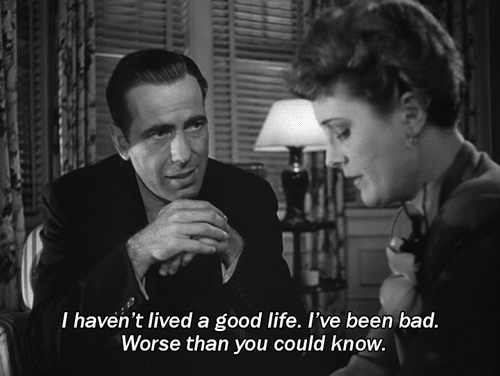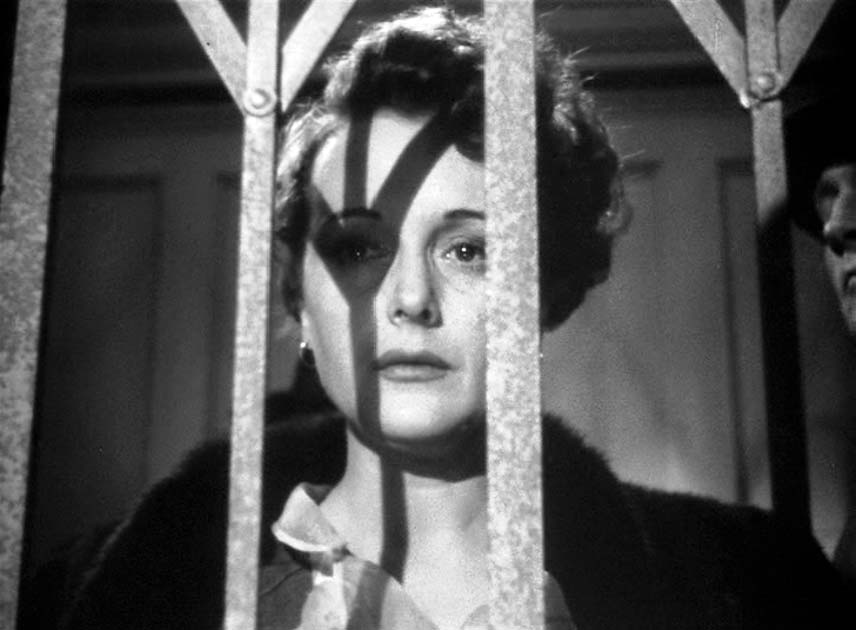Wednesday, 3 August 2016
The Maltese Falcon
Film Noir is a term coined by French film critic in 1946 to designate a particular type of American thriller film. After World War II, France lifted the ban on the importation of American films, French cinema was flooded with Hollywood films, including a new type of thriller (Hayward. S, 2013). These films often featured an investigator who encounters and malice during his investigation of a case.
Film noir emerged in the period of political instability between 1941 and 1958, the time of World War II and Cold War in United States. This was a time of repressed insecurity, paranoia as American questions their national identity. During the war, the man went to fight and the women started to join into workforce. Women became independent and expended their worldview beyond their domestic spheres, men became suspicious and paranoid of women's role in workforce when they returned from war. This caused men questioned themselves on masculine identity and national identity. Hence, film noir was an expression of male concern at women's sexual independence that threaten masculinity. It features a world of criminals with characters' central motives are usually greed, lust and ambition, drench in fear. Film noir has a style of cinematography that emphasizes the impression of night-time photography with high-contrast lighting, occasional low-key lighting, deep shadows and oblique angles to create a sense of dread and anxiety. It is inspired by German Expressionism, using oblique vertical and horizontal lines in shots, creates distortion to enhance the criminalistic world. Thematically, characters in film noir are corrupted, which is no pure good. It also consists of fatalistic theme, hopeless tone, blurred morals and intellect. It is always about male protagonist vs femme fatale. The femme fatale is a strong, active, sexually expressive female who use sexuality to accomplish her goals. Film noir will usually punish this type of women and the punishment is intricate to the reassertion to male identity. All the characters in film noir are with flaws, which the audience are not able to blame anyone in the end of the film because everyone is bad. The Maltese Falcon (John Huston, 1941) is one of the best film noir in the history and i will be discussed further.
This film is about a private detective, Sam Spade who gets an offer more than he bargained for he takes a case from a beautiful and secretive woman, Ms Wonderly. As soon as she shows up, troubles follow as Sam's partner is murdered and Sam is accosted by a man, Mr Cairo, demanding he locate a valuable statuette. He then entangles in a dangerous web of crime and intrigue and realizes he must find one thing they all seem to want, the bejeweled Maltese Falcon.
In this film, chiaroscuro can be discovered with high contrast and low key lighting that bring a sense of pessimism and suspicion. The high contrast lighting in the scene of Sam tries to get away from the mystery guy who follows him at the main entrance of the apartment, it creates a hard shadow of Sam, which reflects duality of the character, the evil side of him.
The film also uses a lot of lines to create distortion and enhance the criminalistic world of the film, which can be found in the setting in Ms Wonderly's apartment. The curtains, windows, walls and the pattern of the couch created multiple horizontal and vertical lines.
Ms Wonderly is the classic femme fatale representation in this film. She is an expert at taking full advantage of her beauty and sex appeal to get men to do whatever she wants. She is also an experienced liar, skilled at manipulating the truth and everyone around her. She tells lies and pretends to be weak and innocent to accomplish her goals and intentions. For example, the scene where she claims that she feels dizzy and Sam holds her back to the apartment. Another scene is where she calls Sam and screams in the phone to tell him she is in trouble, then Sam rushes to the location given to help her.
In the end of the film, Sam gives her a punishment by turning her to the police after discovered her hiding secret and lies. This clearly shows one of the characteristics of film noir, which is the protagonist will punish the femme fatale in the end. The scene where Ms Wonderly are brought into the elevator and the shadow of the elevator's gate projected on her face reflects that she is going to be sent into jail.
Subscribe to:
Post Comments (Atom)



No comments:
Post a Comment